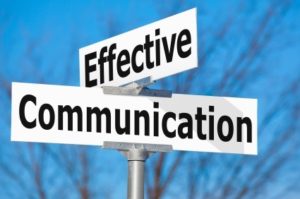
FOR IMMEDIATE RELEASE
Dreamclinic Earns a Finalist Spot for Massage in the King 5 Best of Western Washington Contest For the 5th Time
SEATTLE, WA – December 29, 2015 — Dreamclinic Massage earned a finalist ranking for “Best Massage” in King 5’s Best Massage in Best of Western Washington for 2015. It has done so every year since 2010.
The fall of 2015, Dreamclinic Massage was nominated for and rated highly in all 3 categories – “Best Massage, Best Acupuncture, and Best Place to Work,” claiming the Finalist spot for Massage. The Best of Western Washington awards were based on more than ____ votes from local consumers. The coveted Finalist spots across all voting categories, were announced in November 2015, after six weeks of voting.
“It’s always rewarding to receive accolades such as these and it’s especially gratifying when the recognition comes as a result of voting by actual clients. The fact so many people came out in support of Dreamclinic again in 2015 lets us know we are continuing to succeed in our mission of providing the highest quality of personalized bodywork that meets each client’s individual goals,” said Dreamclinic CEO Larisa Goldin. “Our commitment to our clients and team’s well-being as well as a positive work environment, has allowed us to become a regional leader for therapeutic massage and acupuncture services.”
About Dreamclinic
Dreamclinic is a trusted brand for Wellness, providing quality therapeutic massage and acupuncture in the greater Seattle area and at workplaces in Washington, Oregon, California, Utah, and South Carolina. Dreamclinic Workplace Massage division has earned the trust of top employers that make health care options for their staff a priority. Dreamclinic’s list of Workplace clients include companies such as Boeing, Twitter Seattle, Raytheon, Seattle University, and Essentia Water. Dreamclinic’s approach is to truly understand the goals of each client, then tailor each session to meet the individual client’s needs. To ensure the highest level of care, Dreamclinic hires only medically informed, highly-skilled therapeutic professionals that are also genuinely passionate about helping others take control of their health.
Founded in 2003, Dreamclinic has garnered multiple industry awards for excellence in bodywork, including “Allure Magazine, Best of Yelp, Best of Citysearch, Seattle Magazine, and King 5 Best of Western Washington.” In 2015, Dreamclinc made the nationwide Inc. 5000 Fastest Growing Companies List and was also recognized as one of Puget Sound Business Journal’s 100 Fastest Growing Companies. For more information, visit dreamclinic.com.
About King 5 Best of Western Washington
The KING5 Best of Western Washington features more than 27,288 businesses competing for title of Western Washington’s best. The Best of Western Washington and the Best of NW Escapes features more than 10,000 of Western Washington’s best local businesses and nominees. Eligible businesses are nominated by our readers and Winners are determined by popular vote
CONTACT:
Nolie Durham
Email: [email protected]
206-267-0863 x 303



 Most of us have stress in our lives, whether due to work, family or general environment. For some the stress may cause sleeplessness, anxiety, hypertension or depression. For many the stress leads to muscle soreness somewhere in the body – the shoulders, neck, legs, or back.
Most of us have stress in our lives, whether due to work, family or general environment. For some the stress may cause sleeplessness, anxiety, hypertension or depression. For many the stress leads to muscle soreness somewhere in the body – the shoulders, neck, legs, or back.
 While many people are familiar with Western modalities of massage – Swedish, Deep Tissue, Sports, etc. – they are less aware of the rich massage traditions of Asia. What is Shiatsu Massage? Shiatsu is a form of massage that evolved in Japan. Like other forms of Eastern massage, it is grounded in the concept of balancing the flow of energy, called ki, in the body. Pain, illness, and disease are thought to result from blockages and imbalances of ki. The massage practitioner seeks to restore balance by tonifying the areas where there is a deficiency of energy and dispersing areas of excess.
While many people are familiar with Western modalities of massage – Swedish, Deep Tissue, Sports, etc. – they are less aware of the rich massage traditions of Asia. What is Shiatsu Massage? Shiatsu is a form of massage that evolved in Japan. Like other forms of Eastern massage, it is grounded in the concept of balancing the flow of energy, called ki, in the body. Pain, illness, and disease are thought to result from blockages and imbalances of ki. The massage practitioner seeks to restore balance by tonifying the areas where there is a deficiency of energy and dispersing areas of excess.



 applied. The muscles are then kneaded and stretched with a lifting/kneading stroke and then smoothed, lengthened, and drained of excess fluid with long, firm strokes. Vibration or percussion may also be used to stimulate or release muscles. The limbs may be moved or shaken. The process is repeated on each area of the body for an overall calming and rejuvenating effect.
applied. The muscles are then kneaded and stretched with a lifting/kneading stroke and then smoothed, lengthened, and drained of excess fluid with long, firm strokes. Vibration or percussion may also be used to stimulate or release muscles. The limbs may be moved or shaken. The process is repeated on each area of the body for an overall calming and rejuvenating effect.